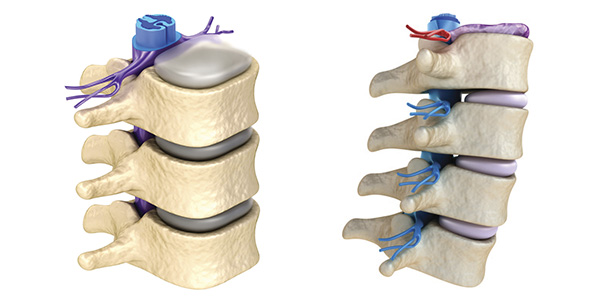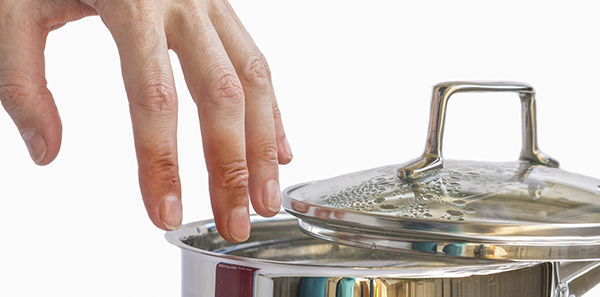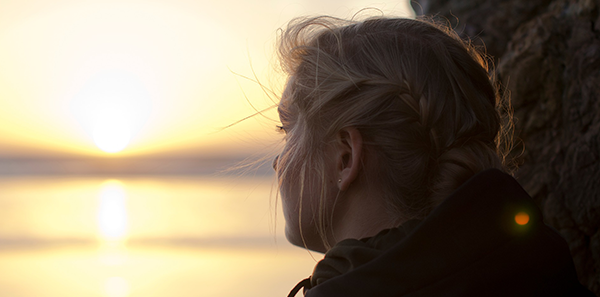
Lumbar spinal stenosis is a condition whereby either the spinal canal (central stenosis) or one or more of the vertebral foramina (foraminal stenosis) becomes narrowed.
The spinal canal is where all the vertebrae join together with a sack that runs through the centre and covers all the nerves leading into the legs. Narrowing is becoming more and more common, especially in older people. The new lifestyle and habits of today’s more sedentary civilisation, together with increased life expectancy, is largely to blame for the higher incidence of this type of condition.
The result is that, when we move, these nerves are compressed, leading to problems with their function. As a result, people suffering from this disease experience back and leg pain, along with pins and needles and a feeling of loss of strength after only walking for a short time, after which they have to stop.
Over time, the distance they can walk before pain sets in becomes increasingly shorter. This is very similar to what happens to patients with poor blood supply, a condition that can be ruled out by your specialist medical practitioner. Someone with this spinal condition tends to have a forward leaning posture. This is due to the fact that, when you lean forward, the openings through which the nerves run become larger.
The spinal specialist will try to find out level and degree of narrowing, which will involve a test known as Magnetic Resonance Imaging (MRI).
Sometimes the specialist will need to add an X-ray study of the spinal column or a CAT scan to inspect the bones around the nerves.
Once the spinal specialist has confirmed the lumbar stenosis, the possibility of surgery can be discussed. This is needed when the pain and other symptoms are unlikely to disappear with conservative forms of medical treatment.
Surgery must be designed to suit the problems and circumstances of each patient. The aim has to be to free up the nerves without causing instability in the spinal column, and involving the least aggressive surgical treatment possible.
Generally speaking, the surgeon will probably propose at least a laminectomy, which nowadays is done using a surgical microscope.
A laminectomy (also known as decompression surgery) creates space by removing the lamina, the back part of the vertebra that covers the spinal canal, enlarging it to relieve pressure on the spinal cord or nerves. In some very specific cases, this operation will have to be completed with fixing techniques. The surgeon will try to not remove or touch the joints if this is not necessary, in order to maintain spinal stability.
The operation is carried out with the patient lying face down, by making a linear incision in the back following the line of the spine and at the height where the stenosis (narrowing) has occurred. The entire operation is done using a motor driven surgical microscope, in order to reduce the risk of damaging the nerves, which are tightly packed and sometimes even stuck to the bones or ligaments that have to be removed.
The laminectomy is carried out on one or several vertebrae, depending on the spread of the lumbar stenosis. If the laminectomy is expected to cause some kind of instability in the spine, the operation is completed with arthrodesis (joint fusion) and intervertebral fixing techniques consisting of inserting screws and bars to support the spine. Fixing is only performed in the event of proven instability or if there is a risk of causing instability during the operation (in the case of an extensive laminectomy, which will also affect the joints).
Normally, patients are encouraged to get out of bed the day after surgery and can be sent home on the second day.
Dr. Juan Sales – Neurosurgeon
The information published in this media neither substitutes nor complements in any way the direct supervision of a doctor, his diagnosis or the treatment that he may prescribe. It should also not be used for self-diagnosis.
The exclusive responsibility for the use of this service lies with the reader.
ASSSA advises you to always consult your doctor about any issue concerning your health.












